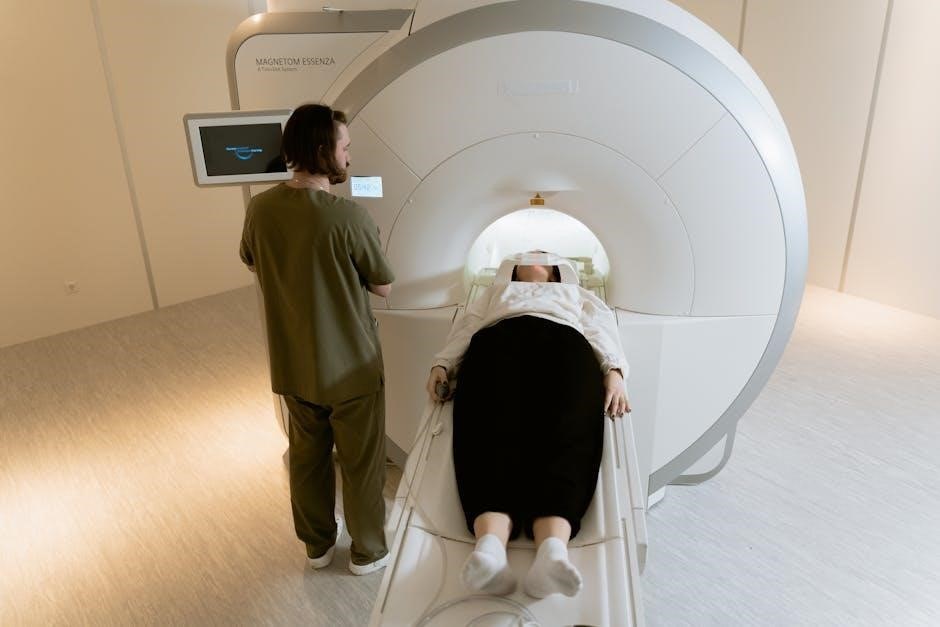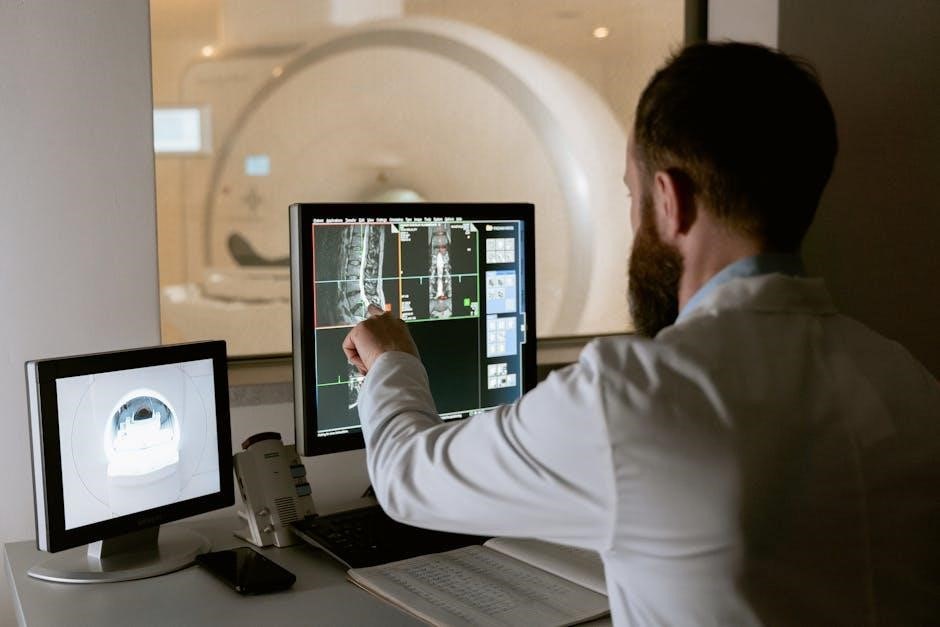BPD Assessment PDF: A Comprehensive Guide
This guide provides a comprehensive overview of Borderline Personality Disorder (BPD) assessment, including screening instruments and the diagnostic process. Understand the tools used for BPD assessment and their role in diagnosis by mental health professionals following DSM criteria.
Borderline Personality Disorder (BPD) assessment is a complex process, relying heavily on clinical judgment and a thorough understanding of the individual’s history, symptoms, and lifestyle. Currently, BPD diagnosis lacks extensively validated objective measures, making the assessment process subjective. Mental health professionals conduct a comprehensive psychiatric interview and medical exam to assess for BPD symptoms.
Several screening instruments are available, including the McLean Screening Instrument for BPD (MSI-BPD), the Borderline Symptom List ⎯ Short Version (BSL-23), and the Borderline Personality Questionnaire (BPQ). These tools aid in identifying potential cases of BPD, though a definitive diagnosis requires a comprehensive evaluation. The MSI-BPD is a 10-item measure designed to screen for BPD, while the BSL-23 assesses BPD symptomatology in adults. The BPQ is an 80-item self-report tool that evaluates borderline personality traits.
This guide explores these assessment methods, highlighting their strengths, limitations, and utility in the context of BPD diagnosis.

Understanding BPD and its Diagnostic Challenges
Diagnosing Borderline Personality Disorder (BPD) presents unique challenges due to the lack of objective measures and reliance on subjective assessments. This section explores these challenges and their impact on accurate BPD identification and treatment.
Subjectivity in BPD Diagnosis
The diagnosis of Borderline Personality Disorder (BPD) currently relies heavily on subjective assessment, posing a significant diagnostic challenge. Unlike many medical conditions with objective markers, BPD diagnosis depends on clinicians’ interpretation of reported symptoms and observed behaviors. This subjectivity stems from the reliance on patient self-reports during psychiatric interviews and the absence of definitively validated, objective measures. The clinician’s judgment plays a crucial role in determining whether an individual meets the diagnostic criteria outlined in the DSM. Factors such as the clinician’s experience, theoretical orientation, and potential biases can influence their assessment, introducing variability in diagnoses across different professionals. The inherent subjectivity in BPD diagnosis underscores the need for standardized assessment tools and increased awareness of potential biases to improve diagnostic accuracy and ensure consistent care.
Lack of Extensively Validated Objective Measures
A significant challenge in diagnosing Borderline Personality Disorder (BPD) is the absence of extensively validated objective measures. Currently, there are no laboratory tests, brain scans, or other biological markers that can definitively confirm a BPD diagnosis. This lack of objective measures forces clinicians to rely primarily on subjective information gathered through interviews and self-report questionnaires. While these methods provide valuable insights into a patient’s experiences and symptoms, they are susceptible to biases and inconsistencies. The subjective nature of BPD assessment contributes to diagnostic uncertainty and can lead to variations in diagnoses across different clinicians. The absence of objective measures also hinders research efforts aimed at understanding the underlying causes and mechanisms of BPD. Developing and validating objective measures for BPD is crucial for improving diagnostic accuracy, promoting more consistent and reliable assessments, and advancing our understanding of this complex disorder. This would ultimately lead to better treatment outcomes and improved quality of life for individuals with BPD.

Screening Instruments for BPD
Several screening tools exist for Borderline Personality Disorder (BPD), including the McLean Screening Instrument (MSI-BPD), Borderline Symptom List (BSL-23), and Borderline Personality Questionnaire (BPQ). These tools help identify potential cases for further evaluation by mental health professionals.
McLean Screening Instrument for BPD (MSI-BPD)
The McLean Screening Instrument for BPD (MSI-BPD) is a widely used 10-item measure designed to screen for borderline personality disorder. Developed by Mary Zanarini and colleagues at McLean Hospital, this paper-and-pencil test is based on the BPD diagnostic criteria outlined in the Diagnostic and Statistical Manual of Mental Disorders (DSM). The MSI-BPD is a self-report questionnaire where individuals indicate whether they endorse (yes/no) each of the ten symptoms listed. A cut-off score of seven or higher suggests potential caseness, warranting further evaluation.
Primary care doctors may use screening tools for BPD, such as the MSI-BPD. The MSI-BPD’s development involved meticulous consideration of BPD diagnostic criteria, resulting in a tool tailored to effectively capture relevant symptoms. By comprehensively examining these aspects, clinicians and researchers involved in BPD assessment and diagnosis can develop a deeper understanding of the instruments utility.
The MSI assesses endorsement (yes/no) of 10 symptoms, with a cut-off of seven indicating potential caseness. The MSI-BPD has illustrated satisfactory reliability and validity (Zanarini et al., 2003).
MSI-BPD: Reliability and Validity
The McLean Screening Instrument for BPD (MSI-BPD) has demonstrated satisfactory reliability and validity, making it a valuable tool in screening for BPD. Zanarini et al. (2003) reported a Cronbach’s alpha of 0.78, indicating good internal consistency. This suggests that the items within the MSI-BPD are measuring a similar construct.
Further supporting its validity, Gardner and Qualter (2009) found that the MSI-BPD correlated highly with other BPD screening tools in a mixed community and student sample. Their research also indicated that confirmatory factor analysis suggested the MSI-BPD is an appropriate measure for assessing BPD as a global construct. This implies that the MSI-BPD effectively captures the underlying dimensions of BPD.
These findings suggest that the MSI-BPD is a reliable and valid instrument for identifying individuals who may be at risk for BPD. However, it is crucial to remember that the MSI-BPD is a screening tool, and a positive result should always be followed by a comprehensive clinical assessment for a definitive diagnosis.
MSI-BPD: Scoring and Interpretation
The McLean Screening Instrument for BPD (MSI-BPD) is scored by summing the number of “yes” responses to the 10 items. Each item corresponds to a specific symptom of BPD as outlined in the Diagnostic and Statistical Manual of Mental Disorders (DSM). A higher score indicates a greater number of endorsed BPD symptoms.
A cut-off score of 7 or higher is generally used to indicate potential caseness for BPD. This means that individuals scoring 7 or above are considered to be at higher risk for having BPD and should be further evaluated by a qualified mental health professional. It is important to note that this cut-off score is not definitive, and clinical judgment should always be used when interpreting the results.
The MSI-BPD serves as a screening tool, identifying individuals who may warrant a more comprehensive assessment. It should not be used as a sole basis for diagnosing BPD. A thorough psychiatric interview, medical exam, and consideration of the individual’s history are necessary for an accurate diagnosis. The MSI-BPD provides a quick and efficient way to identify potential cases, but professional evaluation is crucial.
Borderline Symptom List ౼ Short Version (BSL-23)
The Borderline Symptom List ⎯ Short Version (BSL-23) is a 23-item self-report questionnaire specifically designed to assess BPD symptomatology in adults. It is a concise version of the original BSL, offering a more time-efficient way to evaluate BPD traits. The BSL-23 measures the severity of BPD symptoms experienced by an individual over the past week.
The scale assesses key BPD diagnostic criteria outlined in the DSM, including affective instability, recurrent suicidal behaviors, gestures, threats, self-mutilating behavior, and transient dissociative symptoms. The BSL-23 is valuable because it allows individuals to self-report their experiences, providing clinicians with insights into the subjective impact of BPD symptoms.
The BSL-23 is widely used in both clinical and research settings for BPD assessment. It allows clinicians to monitor treatment progress, evaluate intervention outcomes, and gain a deeper understanding of a patient’s symptom profile. By comprehensively examining these aspects, clinicians and researchers involved in BPD assessment and diagnosis can develop a deeper understanding of the instruments utility.
Borderline Personality Questionnaire (BPQ)
The Borderline Personality Questionnaire (BPQ) is an 80-item self-report assessment tool designed to evaluate borderline personality traits in accordance with the criteria outlined in the DSM: Diagnostic and Statistical Manual of Mental Disorders. Individuals respond to statements on a Likert scale, indicating the degree to which each statement applies to them. The BPQ is often used as a screening measure to identify individuals who may benefit from further assessment.
The BPQ explores various facets of BPD, including affective dysregulation, identity disturbance, impulsivity, and interpersonal difficulties. It provides a comprehensive overview of an individual’s BPD traits, helping clinicians gain a better understanding of their symptom presentation. The BPQ is easy to administer and score, making it a practical tool for busy clinicians.
The BPQ is a valuable resource for researchers interested in studying BPD; It helps researchers investigate the prevalence of BPD traits in different populations and examine the effectiveness of various treatments. By providing a standardized measure of BPD traits, the BPQ facilitates collaboration among researchers and promotes a deeper understanding of this complex disorder.

The Assessment Process for BPD Diagnosis
BPD diagnosis involves a thorough assessment of symptoms, lifestyle, and health history by a mental health professional. This process utilizes diagnostic criteria from the DSM to ensure an accurate and comprehensive evaluation.
Comprehensive Psychiatric Interview and Medical Exam
A comprehensive psychiatric interview forms the cornerstone of BPD assessment. This involves a detailed exploration of the individual’s mental health history, current symptoms, and overall functioning. Clinicians delve into the patient’s relationships, emotional experiences, and behavioral patterns to identify potential BPD traits.
The interview also aims to rule out other mental health conditions that may mimic or co-occur with BPD. Furthermore, a medical exam is crucial to exclude any underlying medical conditions contributing to the psychological symptoms. This comprehensive approach ensures a thorough and accurate diagnosis.
Currently, BPD diagnosis relies on subjective assessment due to the absence of extensively validated objective measures. Therefore, the psychiatric interview is crucial. Clinicians gather data to evaluate the DSM criteria for BPD and evaluate the patient. This thorough evaluation alongside a medical examination is vital for accurate diagnosis. This includes screening tools, observer ratings, structured interviews, and self-report measures.

Alternative screening instrument for borderline personality disorder (SI-Bord)
The Screening Instrument for Borderline Personality Disorder (SI-Bord) emerges as a concise alternative for identifying potential BPD cases. This self-reported questionnaire comprises just five items, focusing on the core features of BPD as defined by the DSM. Its brevity makes it a potentially efficient tool for initial screening, especially in settings where time is limited.
The SI-Bord offers a quick method to assess key BPD characteristics. Unlike more extensive assessments, its focused nature allows for rapid administration and scoring. This can be particularly useful in primary care or other settings where a brief initial assessment is needed to determine if further evaluation is warranted.
While the SI-Bord demonstrates potential as a screening tool, it’s crucial to remember its limitations. A positive result on the SI-Bord should always be followed by a comprehensive evaluation by a qualified mental health professional to confirm a BPD diagnosis. The SI-Bord serves as an initial filter.